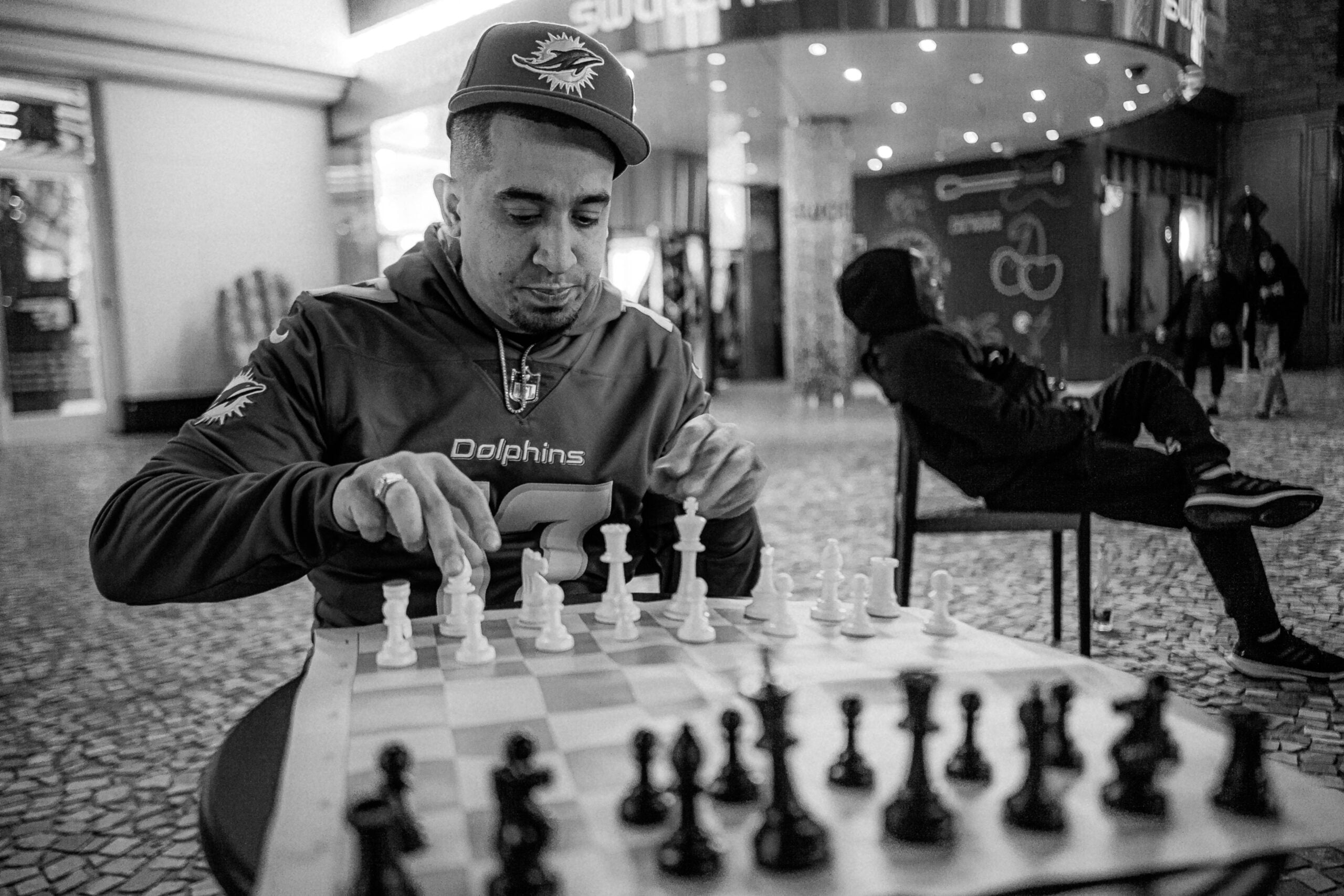
Basics, Chess |
The Reti Opening is a strategic chess opening that has gained popularity among top-level players due to its flexibility and potential for creating imbalances on the chessboard. Named after the Czech Grandmaster Richard Reti, this opening aims to control the center and disrupt Black’s plans from the beginning.
One of the key ideas behind the Reti Opening is to delay the development of the central pawns, allowing White to adopt a more flexible pawn structure. Instead, White focuses on rapid piece development, aiming to place the knights on optimal squares and prepare for an attack.
Here, we will explore some of the main ideas and strategies in the Reti Opening and discuss the advantages and challenges it presents.
The Flexibility of the Reti Opening
Unlike many other openings with a fixed pawn structure, the Reti Opening allows various transpositions and flexible pawn breaks. This flexibility makes it harder for Black to prepare specific responses and can lead to a more complex and strategic game.
By delaying the pawn push to d2-d4, White can choose between different setups depending on Black’s responses. This adaptability makes the Reti Opening a powerful weapon against opponents relying heavily on memorized opening lines.
Controlling the Center
One of the essential principles in chess is controlling the center. The Reti Opening adopts a different approach by indirectly containing the center squares with its pieces rather than immediately occupying them with pawns.
White typically develops the knights to c3 and f3, preparing to influence the center with moves like d2-d4 or e2-e3. This strategy allows for flexible pawn breaks and ensures that Black cannot easily challenge White’s central presence.
Creating Imbalances
The Reti Opening aims to create imbalances on the chessboard from the very start. By delaying the pawn structure, White can disrupt Black’s typical plans and steer the game into unfamiliar territory.
For example, instead of playing d2-d4, White might opt for the move c2-c4, creating a Queen’s Gambit-like structure. This unexpected pawn break can catch Black off guard and force them to adapt to a different type of position than what they had prepared for.
Challenges and Counterplay
While the Reti Opening offers strategic advantages, it also presents its own set of challenges. Delaying the central pawn push can sometimes lead to slower development, giving Black opportunities to seize the initiative.
Additionally, Black has various options for counterplay, such as challenging White’s central presence with moves like …d7-d5 or …c7-c5. Black can also exploit the potential weaknesses in White’s pawn structure, particularly if White’s pieces are not optimally placed.
White players must be well-prepared and familiar with the typical plans and ideas in the Reti Opening. Studying annotated games of top players who have employed this opening can provide valuable insights and help develop a deeper understanding of its intricacies.
Conclusion
The Reti Opening is a strategic and flexible choice for players who seek to create imbalances and steer the game into unfamiliar territory. By delaying the central pawn push, White can retain adaptability and surprise opponents with unexpected pawn breaks. However, it is essential to be aware of the challenges and potential counterplay that this opening presents.
With diligent study and practice, mastering the Reti Opening can give players a powerful weapon in their chess arsenal and open up new strategic possibilities.

Chess
The Knights Before Bishops Strategy in Chess
When it comes to playing chess, having a solid opening strategy is crucial. One popular strategy that many experienced players utilize is the ‘knights before bishops’ strategy. This strategy is often employed in the ‘open game,’ which begins with the moves e4 and e5.
The ‘knights before bishops’ strategy involves developing your knights before your bishops. Traditionally, bishops have been considered to be more valuable than knights, as they have a greater range of movement. However, this strategy challenges that notion and focuses on the unique strengths of knights.
By developing your knights before your bishops, you can use their ability to jump over other pieces and control important central squares. Knights are also excellent at attacking and defending simultaneously, making them a formidable force in the game’s early stages.
Advantages of the ‘Knights Before Bishops’ Strategy
There are several advantages to employing the ‘knights before bishops’ strategy:
- Central Control: By developing your knights early on, you can establish control over the central squares of the board. This allows you to dictate the game’s flow and restrict your opponent’s options.
- Flexibility: Knights can move in an ‘L’ shape, allowing them to navigate the board in a way that bishops cannot. This flexibility can be advantageous when planning attacks or defending against your opponent’s threats.
- Surprise Factor: Many players are accustomed to seeing the traditional development of bishops before knights. By deviating from this norm, you can catch your opponent off guard and disrupt their opening plans.
Implementing the Strategy
To successfully implement the ‘knights before bishops’ strategy, it is important to follow a few key principles:
- Develop Knights to Central Squares: Aim to develop your knights to central squares such as c3, c6, f3, and f6. These squares allow your knights to exert maximum control over the board.
- Coordinate Your Knights: Try to coordinate your knights in a way that they support each other and control important squares. This can create a strong defensive setup and set the stage for future attacks.
- Be Mindful of Pawn Structure: As you develop your knights, be mindful of your pawn structure. Avoid making pawn moves that weaken your position or hinder the development of your other pieces.
Conclusion
The ‘knights before bishops’ strategy is a powerful opening strategy that can catch your opponent off guard and give you a strong foundation for the rest of the game. By prioritizing the development of your knights, you can establish central control, maintain flexibility, and surprise your opponent. Remember to practice this strategy and adapt it to different game scenarios to become a master of the chessboard.

Chess
Introduction
Chess is a game of strategy and foresight. Every move on the chessboard can significantly impact the outcome of the game. To help you gain the upper hand in your chess battles, we have compiled a list of the top 5 best chess moves that can lead you to strategic domination.
1. Pawn to e4
Pawn to e4 is known as the King’s Pawn Opening. This move controls the center of the board and allows your pieces to develop freely. It opens avenues for your bishops and queen to join the battle, putting pressure on your opponent immediately.
2. Knight to f3
The move Knight to f3 is a solid choice for developing your pieces. It supports the pawn on e4 and prepares to castle kingside. This move also opens up the possibility of launching a powerful attack with your queen and bishop on the long diagonal.
3. Bishop to g5
Placing your bishop on g5 pins your opponent’s knight to the queen, making it difficult for them to castle kingside. This move exerts pressure on your opponent’s position, potentially leading to tactical opportunities and gaining material advantage.
4. Queen to d5
Moving your queen to d5 is a strong move that targets your opponent’s king. It threatens checkmate and forces your opponent to defend or make concessions. This move can disrupt your opponent’s plans and create weaknesses in their position.
5. Castle kingside
Castling kingside is a crucial move to ensure the safety of your king. It moves the king to a safer position and connects your rooks, allowing for better coordination and potential for a powerful attack on your opponent’s position.
Conclusion
These top 5 best chess moves are just a starting point for strategic domination. The key to success in chess is to constantly analyze and adapt to your opponent’s moves and find the best moves to counter them. With practice and experience, you can develop your own set of best moves that suit your playing style. Remember, chess is a game of strategy, patience, and creativity. Keep honing your skills, and may your chess battles be filled with triumph!

Chess |
The Sicilian Defense is a popular opening in chess that starts with the moves 1.e4 c5. It is a powerful weapon for blacks, allowing them to counterattack from the outset and create imbalances on the board. This article will explore the main ideas, variations, and strategic concepts behind the Sicilian Defense, aiming to equip chess players with the necessary knowledge to master this opening.
One of the key features of the Sicilian Defense is the asymmetrical pawn structure it creates. By placing a pawn on c5, Black aims to control the center and challenge White’s dominance. This move also prepares for the development of the queen’s bishop and allows for potential attacks on the D4 square.
There are various variations within the Sicilian Defense, each with its own unique characteristics and strategic goals. The Open Sicilian, Najdorf Variation, Dragon Variation, and Scheveningen Variation are just a few examples of the many possibilities. Let’s take a closer look at some of these variations:
The Open Sicilian:
The Open Sicilian arises after the moves 2.Nf3 d6 3.d4 cxd4 4.Nxd4. This variation leads to a highly tactical and dynamic game, as both players strive to control the center and launch attacks on each other’s kings. It is known for its sharp and aggressive nature, making it a favorite choice among aggressive players.
The Najdorf Variation:
The Najdorf Variation is one of the most popular and complex variations within the Sicilian Defense. It is named after the Argentine grandmaster Miguel Najdorf and is characterized by the move 2…d6 followed by 3…a6. Black aims to control the b5 square and potentially launch a counterattack on the queenside. The Najdorf Variation offers rich strategic and tactical possibilities for both sides.
The Dragon Variation:
The Dragon Variation is a highly aggressive and tactical variation within the Sicilian Defense. It is known for its characteristic pawn structure, with pawns on d6, e6, and g6 resembling the shape of a dragon. Black often aims to launch a kingside attack with moves like …g5 and …h5, putting pressure on White’s kingside and creating complications on the board.
The Scheveningen Variation:
The Scheveningen Variation is another popular choice within the Sicilian Defense. It is characterized by the moves 2…d6 followed by 3…e6. Black aims to develop their light-squared bishop to e7 and establish a solid pawn structure. This variation offers flexibility and a solid defense against White’s aggressive intentions.
When playing the Sicilian Defense, it is crucial to understand the underlying strategic concepts. Here are some key ideas to keep in mind:
- Control of the Center: By playing …c5, Black aims to challenge White’s control of the center and gain space on the board. Maintaining control and not allowing White to establish a strong central pawn structure is important.
- Counterattacking Opportunities: The Sicilian Defense allows Black to launch counterattacks immediately. By putting pressure on White’s position, Black aims to create imbalances and seize the initiative.
- Flexible Pawn Structure: The asymmetrical pawn structure in the Sicilian Defense offers flexibility and dynamic possibilities. It is important to understand the strengths and weaknesses of the pawn structure and plan accordingly.
The Sicilian Defense takes time and practice. By studying the main variations, understanding the strategic concepts, and analyzing master games, chess players can improve their understanding of this complex opening. It is a versatile and powerful weapon for Black, offering plenty of creative and dynamic play opportunities.

Chess |
Are you tired of playing the same old chess openings? Do you want to surprise your opponents and catch them off guard right from the start? If so, the Blackburne Shilling Gambit might just be what you need. This daring opening is named after the English chess player Joseph Henry Blackburne, renowned for his aggressive and unorthodox playing style.
The Blackburne Shilling Gambit arises after the moves 1.e4 e5 2.Nf3 Nc6 3.Bc4 Nd4 4.Nxe5 Qg5. It is a highly tactical opening that aims to sacrifice a knight early in exchange for rapid development, attacking chances, and the potential for a devastating king-side assault.
One of the key attractions of the Blackburne Shilling Gambit is that it often catches opponents off guard. Many players are unfamiliar with the intricacies of this opening and may be tempted to greedily capture the knight on e5. Little do they know that falling into the trap can spell disaster for them.
The Trap: Fool’s Mate
The Blackburne Shilling Gambit’s main trap is Fool’s Mate. A checkmate pattern can occur as early as the fourth move. After 4…Qg5, White has a couple of options, but the most tempting move is to capture the knight on e5 with 5.Nxf7. This is where the trap is set.
If Black falls into the trap and captures the knight with 5…Qxg2, White can deliver checkmate in just two moves with 6.Rf1 Qxe4+ 7.Be2 Nf3#.
It is important to note that falling for Fool’s Mate is rare at higher levels of play. Experienced players know the trap and will avoid it by making different moves. However, the threat of Fool’s Mate can still pressure Black and force them to make suboptimal moves in the opening.
Playing the Blackburne Shilling Gambit
Now that you are familiar with the trap in the Blackburne Shilling Gambit let’s look at how to play this exciting opening. After 1.e4 e5 2.Nf3 Nc6 3.Bc4 Nd4 4.Nxe5 Qg5, White has several viable options:
- 5.Nxf7: This is the move that sets the trap. However, as mentioned earlier, experienced players will not fall for it and will respond with 5…Qxg2 to avoid checkmate.
- 5.Nc3: This move prepares to bring the queen out to e2 and defend the knight on e5. It also opens up the possibility of castling king-side for White.
- 5.d3: This move defends the knight on e4 and prepares to develop the bishop to e3 or g5.
- 5.g3: This move prepares to fianchetto the bishop on g2 and defend the knight on e5.
After any of these moves, Black has several ways to continue the game. They can capture the knight on e5 with 5…Qxg2, defend the pawn on g2 with 5…Qg6, or develop their pieces with moves like 5…Nf6 or 5…d6.
Conclusion
The Blackburne Shilling Gambit is a fascinating opening that can catch your opponents off guard and lead to exciting tactical battles. While falling into the trap of Fool’s Mate is unlikely at higher levels of play, the checkmate threat can still pressure Black and force them to make suboptimal moves.
By mastering the Blackburne Shilling Gambit, you can add a powerful weapon to your chess arsenal and surprise your opponents with a bold and aggressive opening. So, go ahead and give it a try in your next games. Good luck and happy chess!





